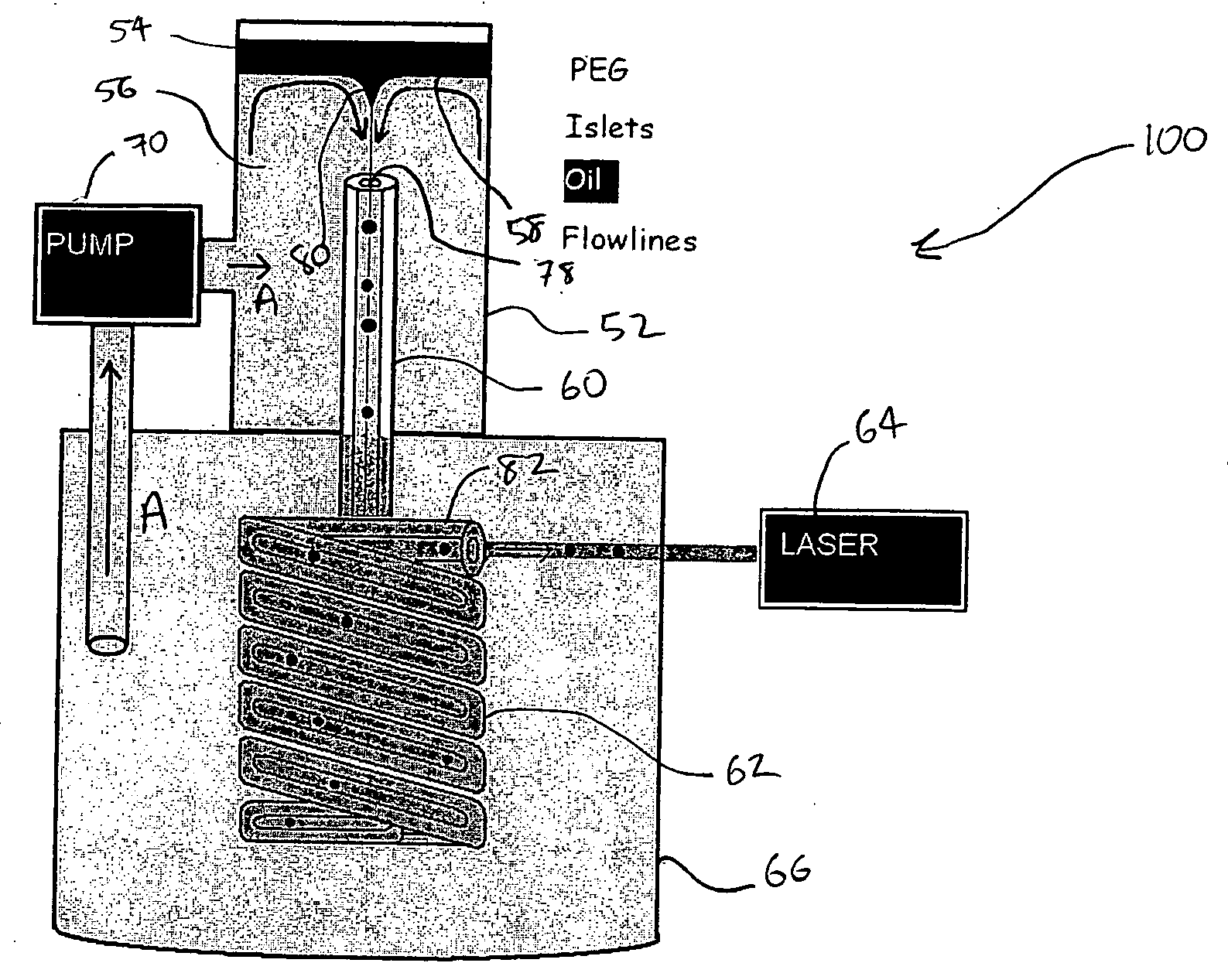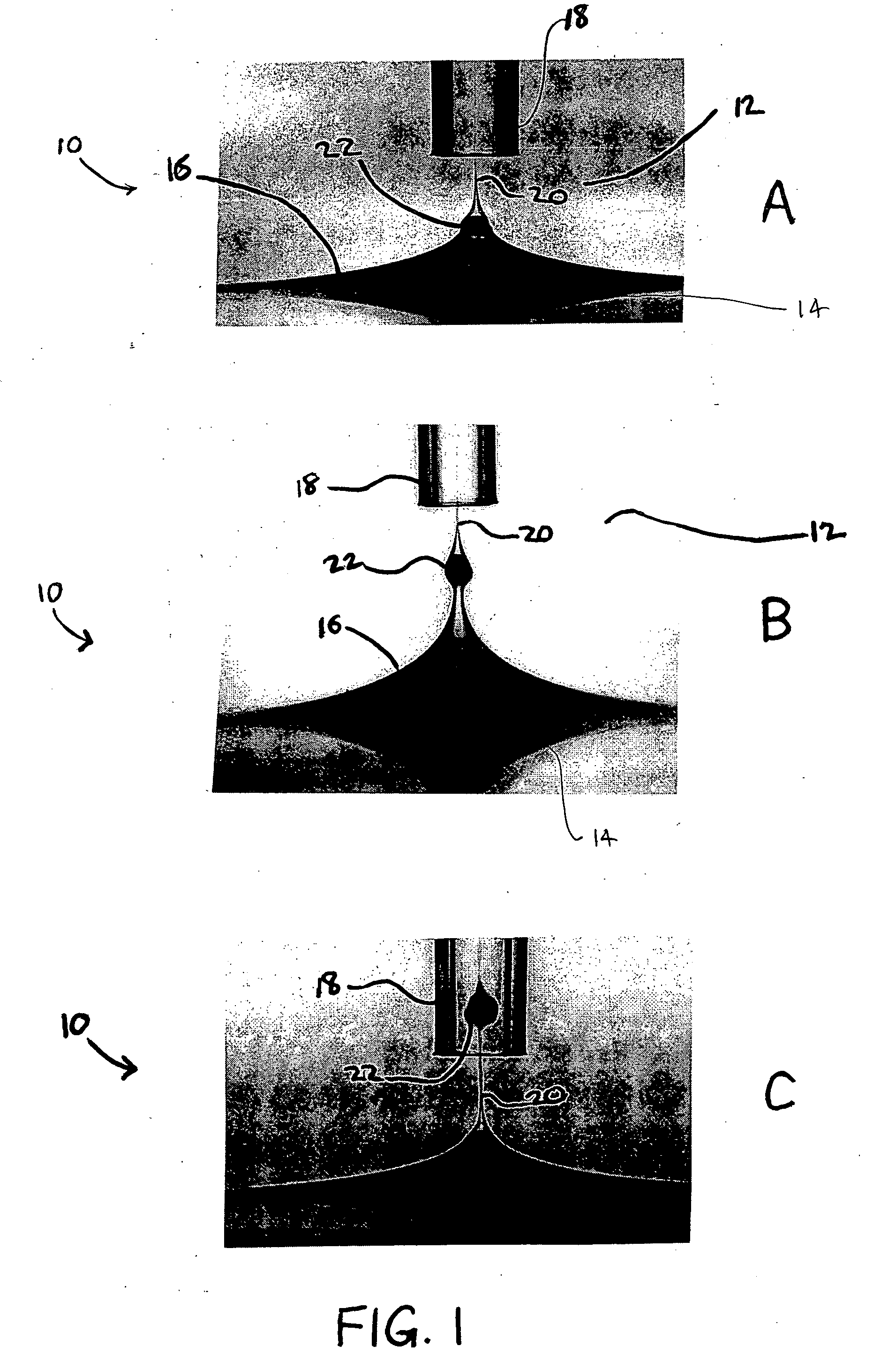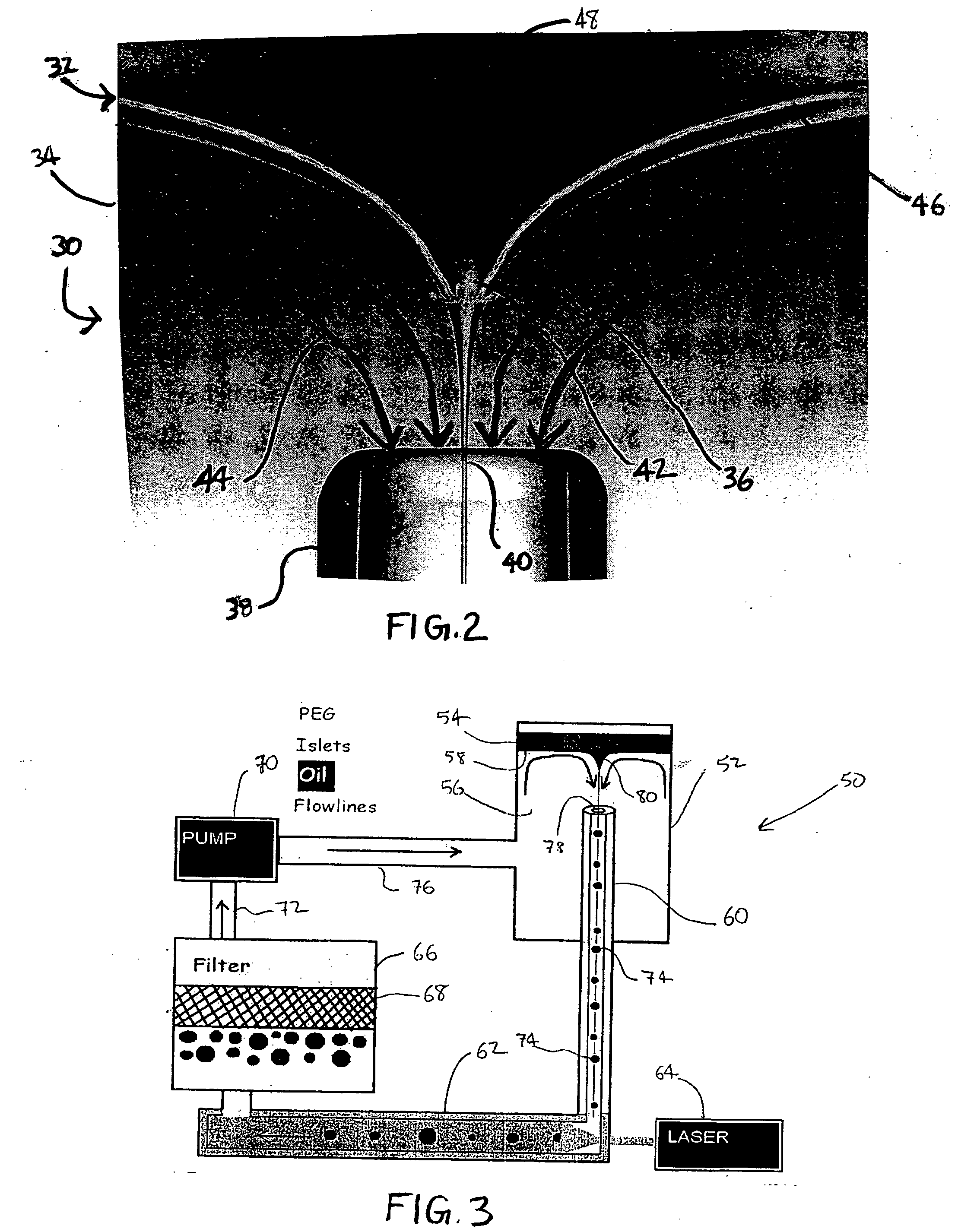Microencapsulation of particles in a polymer solution by selective withdrawal through a high viscosity low density fluid and subsequent crosslinking
a technology of polymer solution and microencapsulation, which is applied in the field of encapsulation methods and apparatuses, can solve problems such as unstable rise, and achieve the effects of improving coating quality, efficient coating, and increasing the production rate of coated particles
- Summary
- Abstract
- Description
- Claims
- Application Information
AI Technical Summary
Benefits of technology
Problems solved by technology
Method used
Image
Examples
Embodiment Construction
[0018] The present invention relates to methods and apparatus for coating particles. The coated particles may be Islets of Langerhans for transplantation into a patent for treating Type I diabetes. Preferably Islets of Langerhans are encapsulated in crosslinked poly (ethylene glycol) diacrylate (PEG) to form a hydrogel capsule surrounding the Islets. Ideally such a coating will provide a semipermiable membrane which allows for the free diffusion of relatively smaller molecules such as insulin and glucose while excluding larger molecules such as antibodies.
[0019] The invention employs the selective withdrawal technique to individually coat particles. This technique provides for the complete encapsulation of particles in a protective coating of controlled thickness independent of the size of the particle. The invention employs the inverted geometry described above. First and second immiscible fluids are added to a container. The first fluid is less dense than the second fluid and flo...
PUM
| Property | Measurement | Unit |
|---|---|---|
| wavelength | aaaaa | aaaaa |
| molecular weight | aaaaa | aaaaa |
| viscosity | aaaaa | aaaaa |
Abstract
Description
Claims
Application Information
 Login to View More
Login to View More - R&D
- Intellectual Property
- Life Sciences
- Materials
- Tech Scout
- Unparalleled Data Quality
- Higher Quality Content
- 60% Fewer Hallucinations
Browse by: Latest US Patents, China's latest patents, Technical Efficacy Thesaurus, Application Domain, Technology Topic, Popular Technical Reports.
© 2025 PatSnap. All rights reserved.Legal|Privacy policy|Modern Slavery Act Transparency Statement|Sitemap|About US| Contact US: help@patsnap.com



